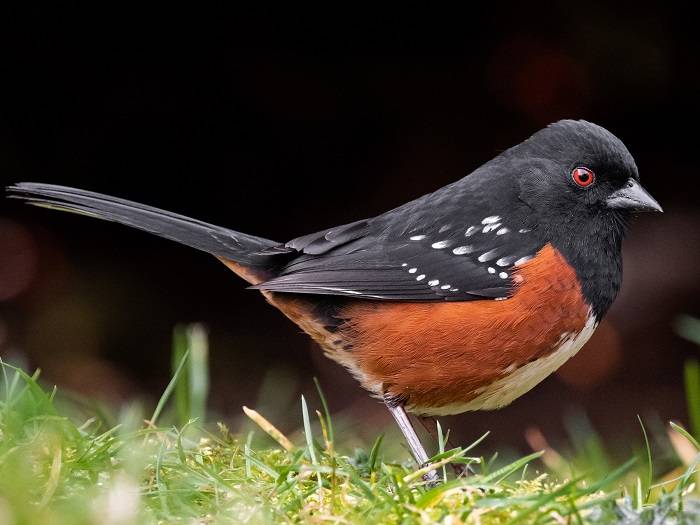In the colorful world of avian diversity, orange and black birds stand out as striking examples of nature’s artistry. With their vibrant plumage and captivating presence, these birds command attention wherever they go. In this blog post, we’ll embark on a journey to discover the diverse species of orange and black birds, unravel their fascinating behaviors, and explore their ecological significance in the natural world.
A Kaleidoscope of Colors: The Diversity of Orange and Black Birds
American Robin (Turdus migratorius):
- The American robin is a familiar sight across North America, known for its distinctive orange breast and black head. These birds are often associated with the arrival of spring and are adept at foraging for earthworms and insects on lawns and in gardens.
Baltimore Oriole (Icterus galbula):
- With its vibrant orange plumage and contrasting black wings, the Baltimore oriole is a symbol of summer in eastern North America. These migratory birds are skilled weavers, crafting intricate hanging nests in trees to raise their young.
Eurasian Golden Oriole (Oriolus oriolus):
- The Eurasian golden oriole is a stunning bird found in woodlands across Europe and Asia. Males boast bright orange underparts and striking black wings, while females exhibit more subdued colors. Their melodious songs fill the forest canopy during the breeding season.
Blackburnian Warbler (Setophaga fusca):
- The Blackburnian warbler is a neotropical migrant that breeds in North America’s boreal forests. Males sport fiery orange throats and distinctive black markings, making them a sought-after sight for birdwatchers during spring migration.
Behaviors and Adaptations
Feeding Ecology:
- Orange and black birds exhibit a diverse array of feeding behaviors, ranging from insectivory to frugivory. Species like the Baltimore oriole specialize in consuming nectar, fruit, and insects, while others, such as the American robin, forage for earthworms, berries, and seeds.
Breeding Strategies:
- Many orange and black birds engage in elaborate courtship displays to attract mates and establish breeding territories. Males often showcase their vibrant plumage and sing intricate songs to impress females and deter rivals.
Migration Patterns:
- Several species of orange and black birds are migratory, undertaking long-distance journeys between breeding and wintering grounds. These annual migrations are driven by seasonal changes in food availability and daylight hours, with birds traveling thousands of miles to reach their destinations.
Ecological Significance
Seed Dispersal:
- Orange and black birds play essential roles in ecosystem functioning, particularly in seed dispersal. By consuming fruits and berries and subsequently depositing seeds in new locations, these birds facilitate plant regeneration and contribute to forest diversity.
Insect Control:
- Many orange and black birds are voracious insectivores, feeding on a wide range of invertebrates, including caterpillars, beetles, and spiders. Their foraging activities help regulate insect populations and reduce pest outbreaks in forests and gardens.
Pollination Services:
- Some orange and black birds, such as orioles, play indirect roles in pollination by feeding on nectar from flowers. As they visit flowers to obtain nectar, they inadvertently transfer pollen between plants, promoting cross-pollination and fruit production.
Orange and Black Birds
Habitat Loss and Fragmentation:
- Orange and black birds face threats from habitat loss, degradation, and fragmentation due to human activities such as deforestation, urbanization, and agriculture. Loss of suitable breeding and wintering habitats can disrupt their migratory patterns and reduce breeding success.
Climate Change Impacts:
- Climate change poses additional challenges for orange and black birds, altering the timing of migration, availability of food resources, and distribution of suitable habitat. Rising temperatures and changing precipitation patterns may lead to mismatches between birds’ breeding cycles and peak food availability.
Related Post:
Exploring the Fascinating World of Male, Female, and Male Muscovy Ducks
Unveiling the Spectrum of Colored Duck Eggs: Nature’s Palette of Surprises
Unlocking the Secrets of Duck Hatching: From Egg to Duckling
Orange and black birds captivate us with their vibrant colors, enchanting songs, and vital ecological roles. From the bustling American robin to the elusive Eurasian golden oriole, these birds enrich our lives and ecosystems with their presence. By understanding and appreciating their behaviors, adaptations, and conservation needs, we can work together to ensure the continued survival and well-being of these magnificent creatures.



